I remember covering the Black Lives Matter protests in the US a few years ago–before I made the switch to analog full time–vividly: the police sirens, blocked streets, chanting, and all the run-and-gunning as one often does in high-action situations. Like I mentioned in my previous article, there is something about chaos that I gravitate towards. I enjoy the adrenaline rush, uncertainty, and the precarious nature of photographing in situations that are potentially hazardous. Whether it’s an underground metal concert in a pitch-black club filled with hundreds of people or a demonstration where thousands are calling for change. Witnessing the raw emotion, anger, frustration, and the release that follows is what excites me the most. Conflict in any shape or form is a worthy theme to capture and analyse.
Recently, I decided to cover street protests again–this time in Melbourne, Australia and exclusively on film. It started as an idea I had while still in lockdown, one that took me back to my comfort zone of social documentary work where I feel most inspired (although my passion for both street and abstract is still strong). It is also a continuation of a project I started some months ago that documents social movements and street protests in Melbourne.
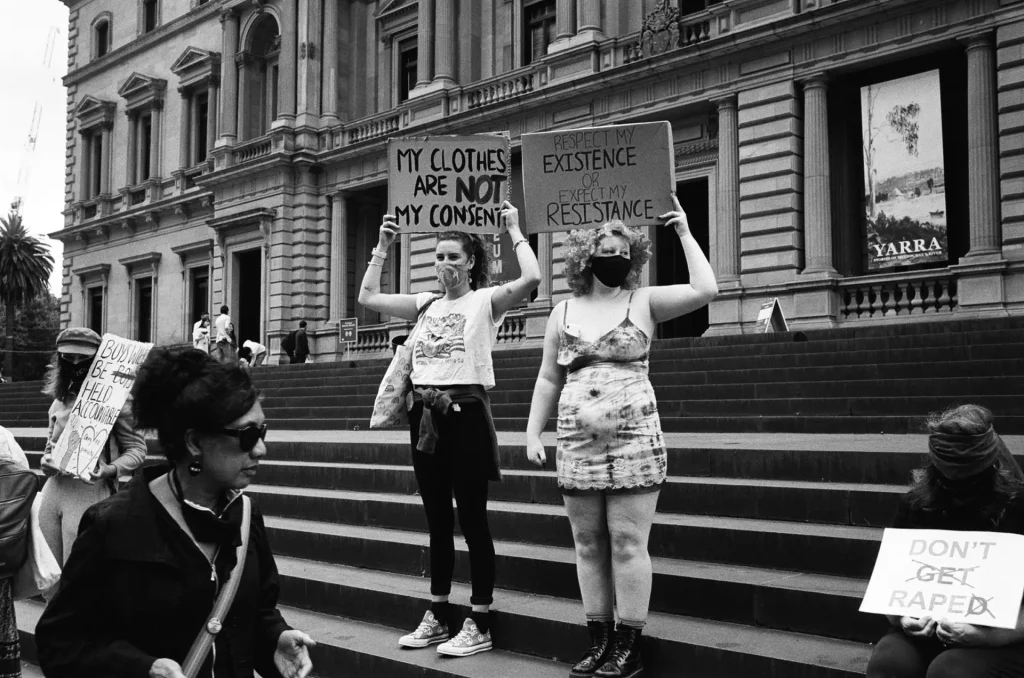
A few weeks ago, the Premier of the state of Victoria in Australia proposed a new pandemic bill that has proven to be rather controversial. Proponents of the bill argue that it will make managing future pandemics easier by giving the Premier more freedoms in making policy decisions. Opponents fear the bill is a power grab and will inevitably lead to corruption and tyranny.
Taking advantage of the recently relaxed lockdown measures, I made my way to the centre of the city to witness the events on Saturday, November 6th. Equipped with a Rolleiflex 2.8F, Leica M2, and a few rolls of Fomapan 200 and Rollei 400 RPX, and decked out in sneakers, black jeans, and a checkered long sleeve shirt (my lumberjack with a camera look), I arrived in the Central Business District to find a large crowd chanting and walking towards Parliament House. I joined them for a few minutes, weaving in and out, climbing on blocks, crouching, worming my way around as best as I could to get a few shots of the most interesting characters and signs.
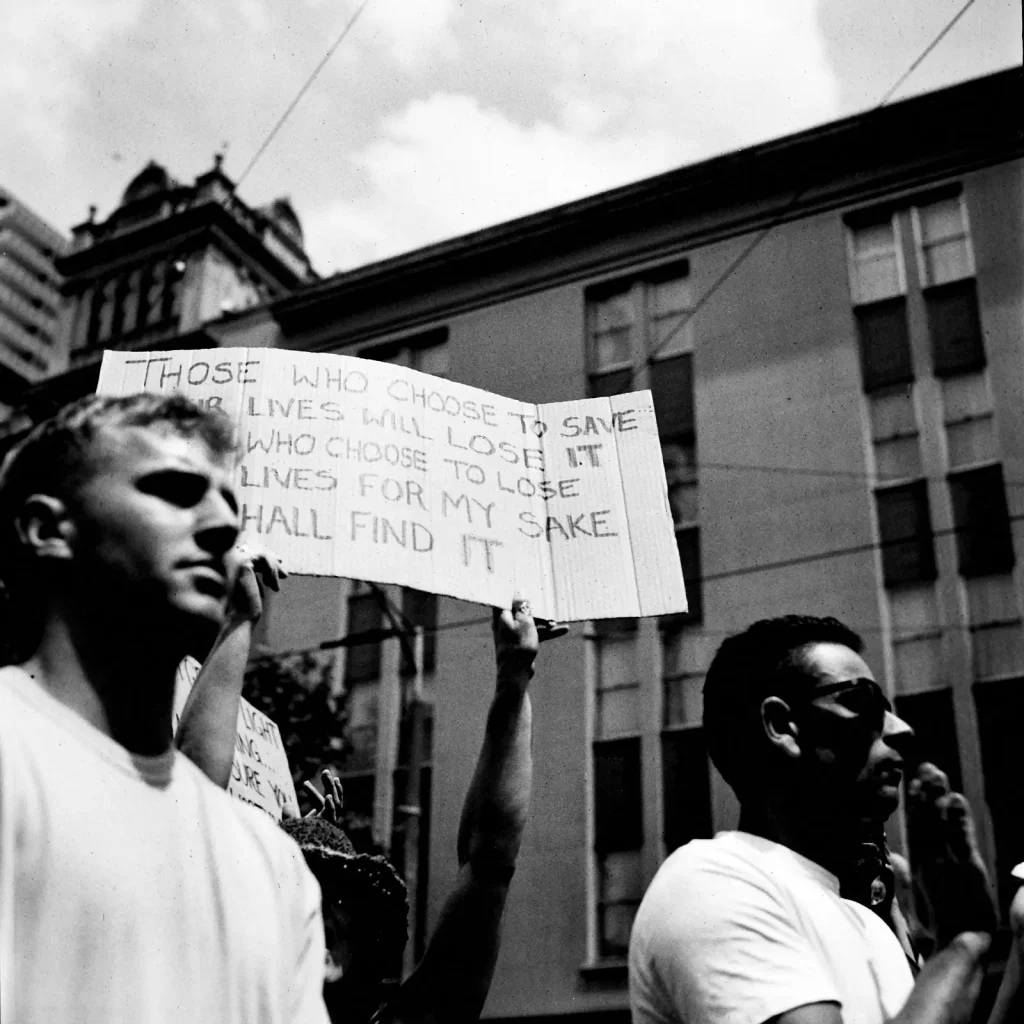
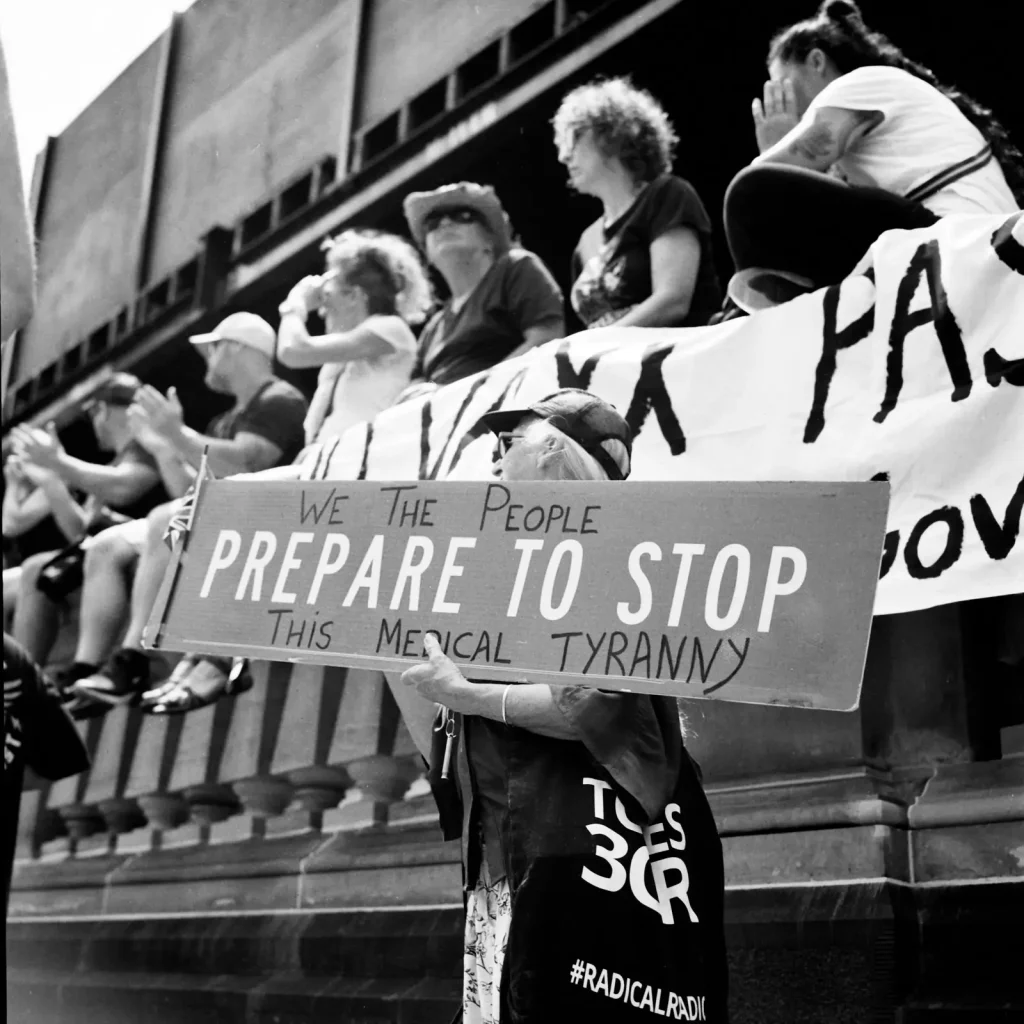
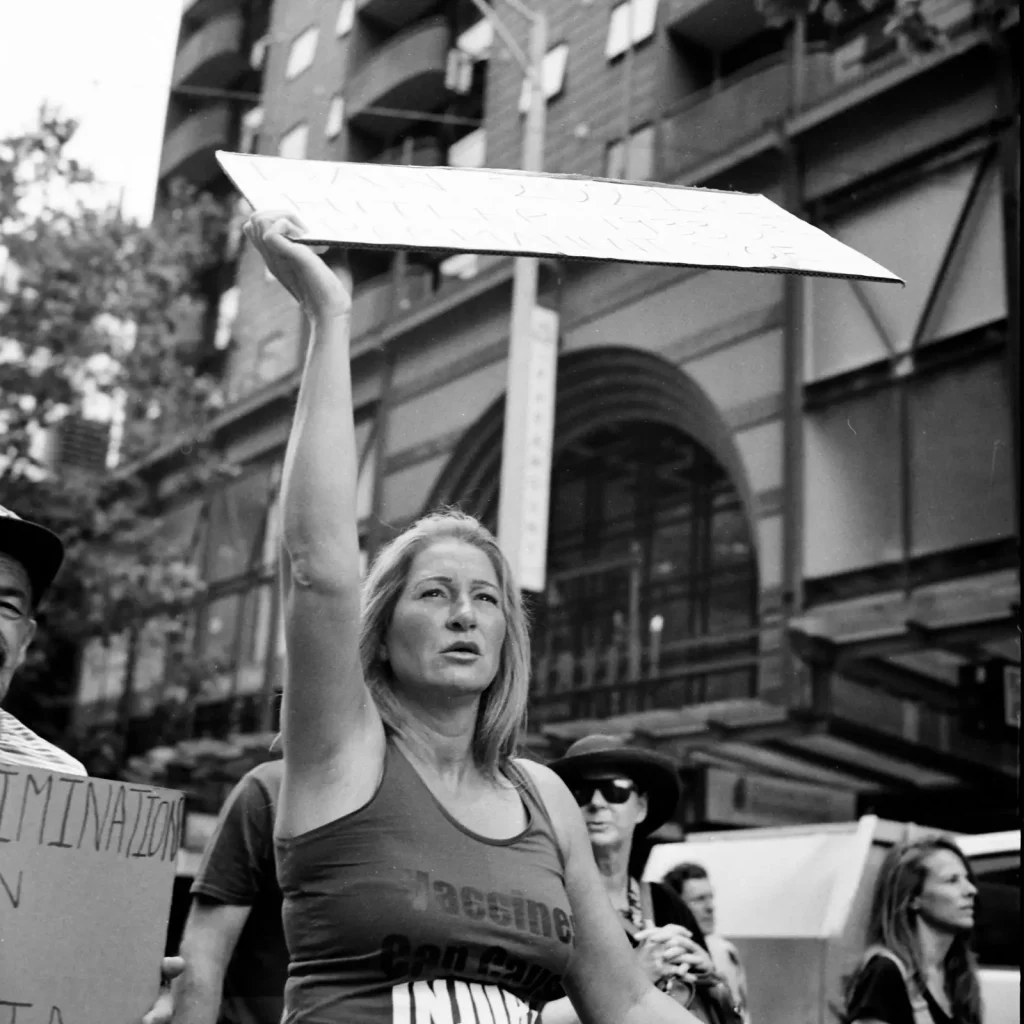
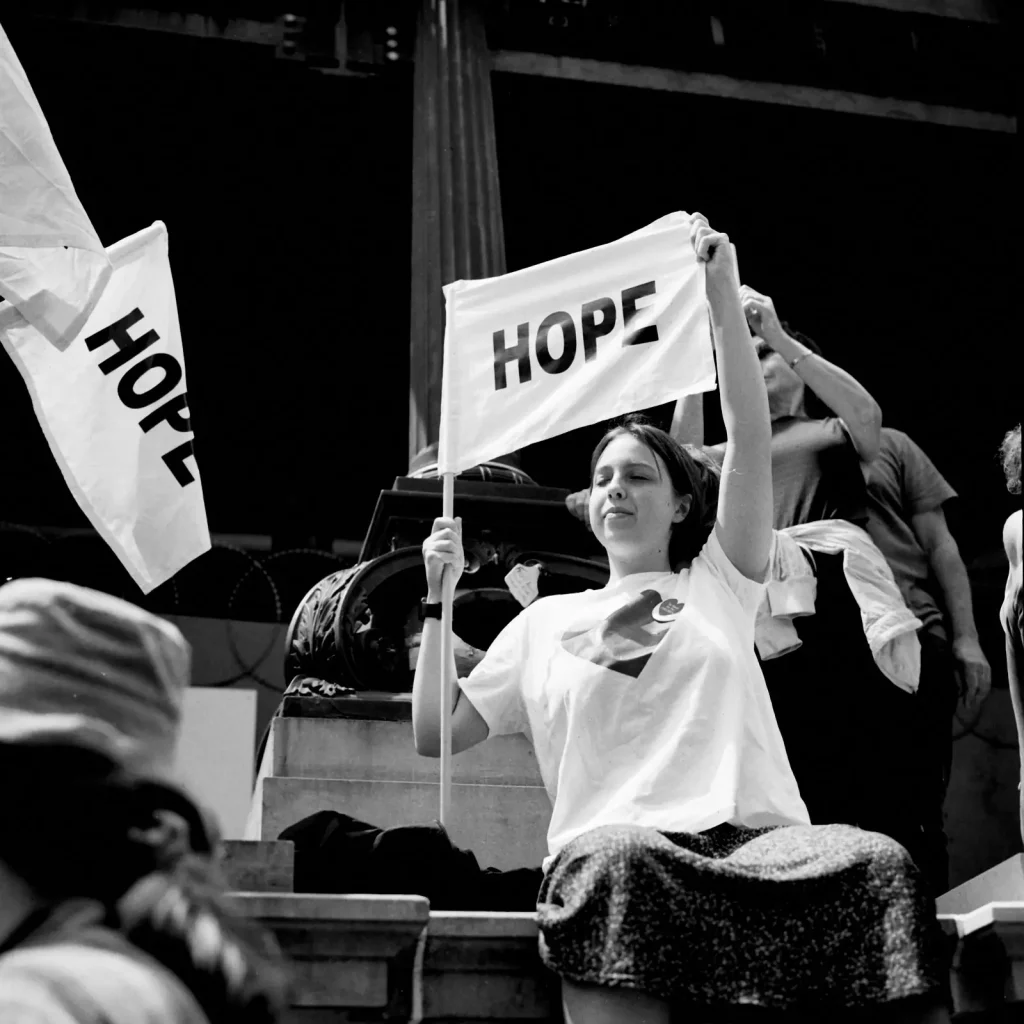
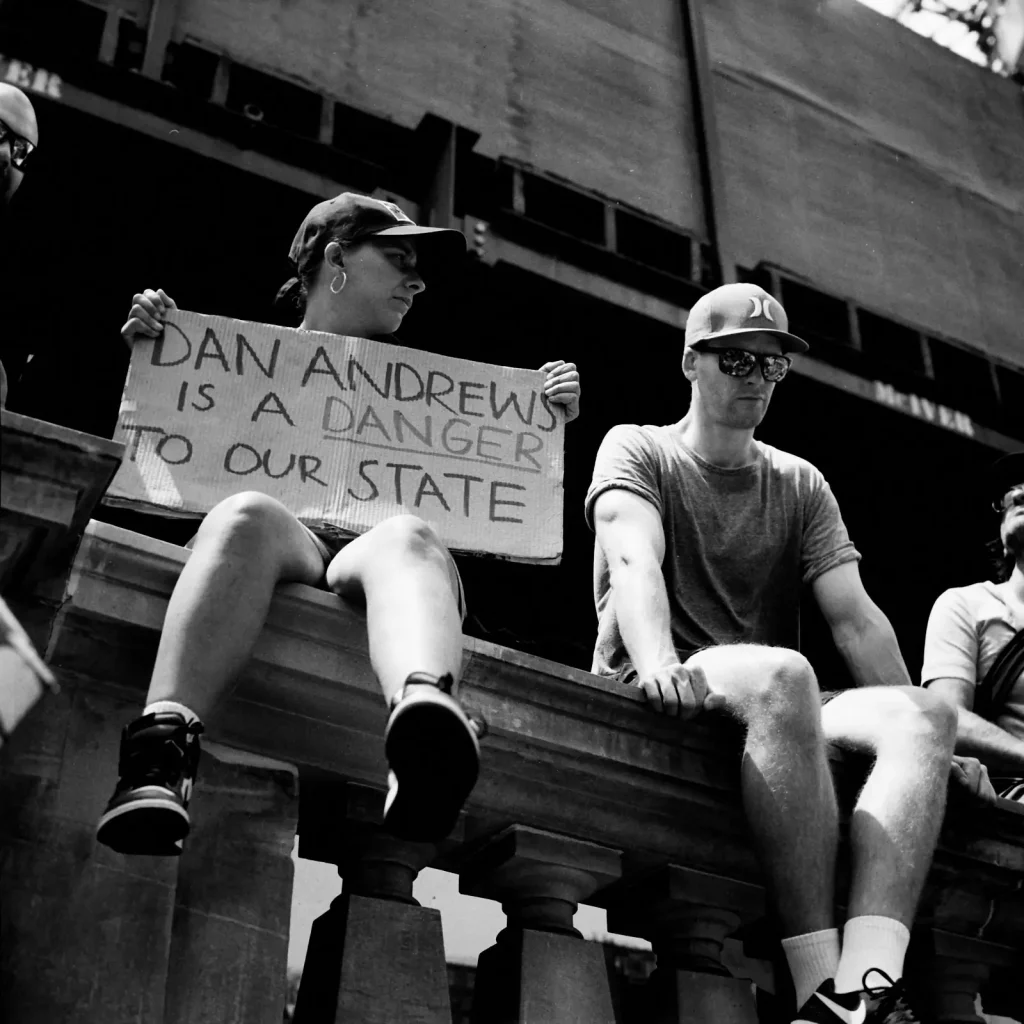
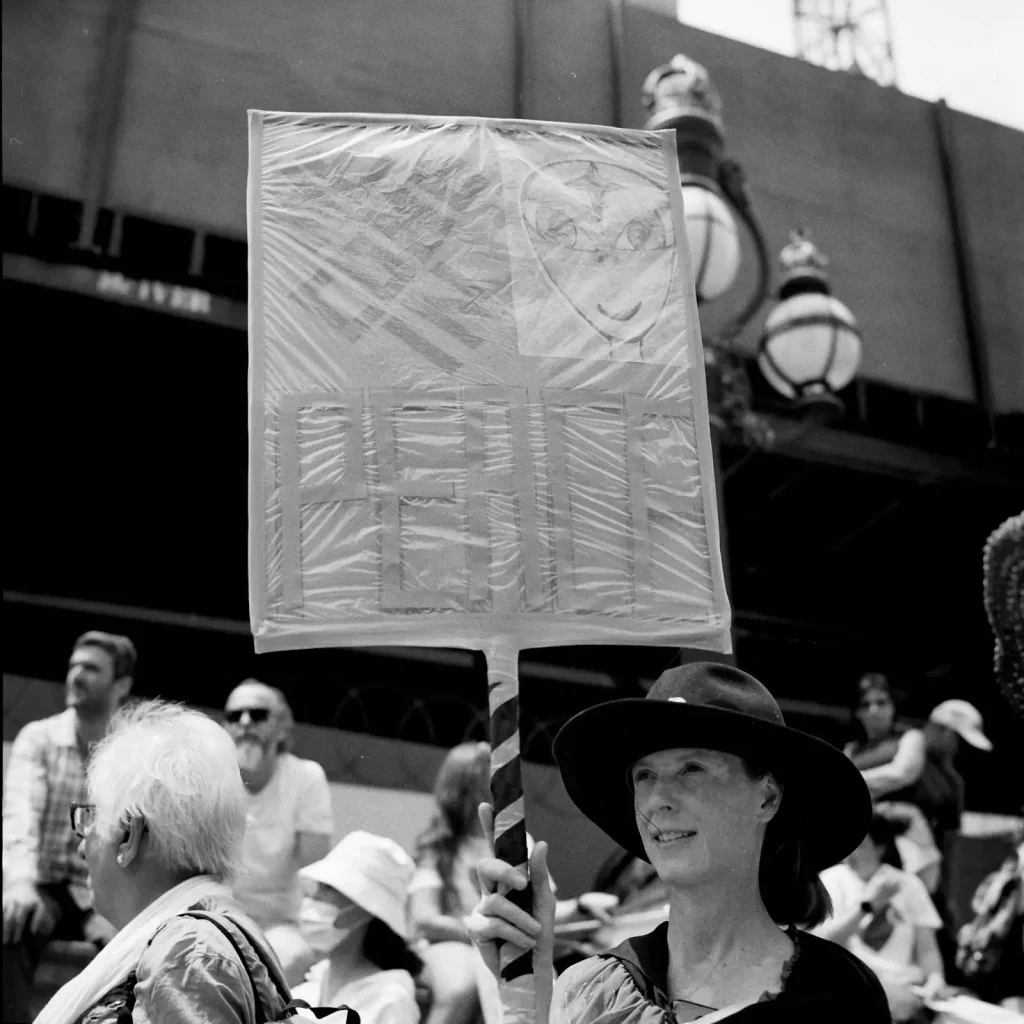
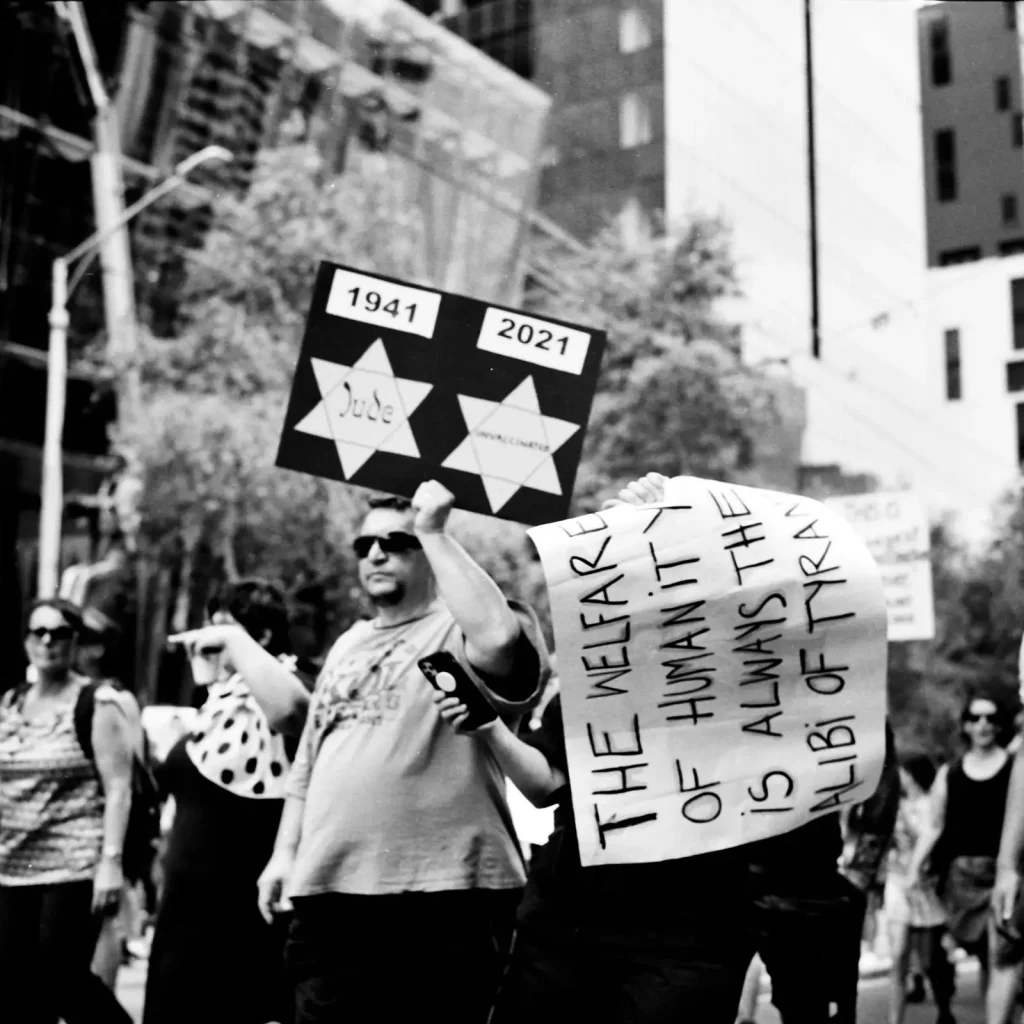
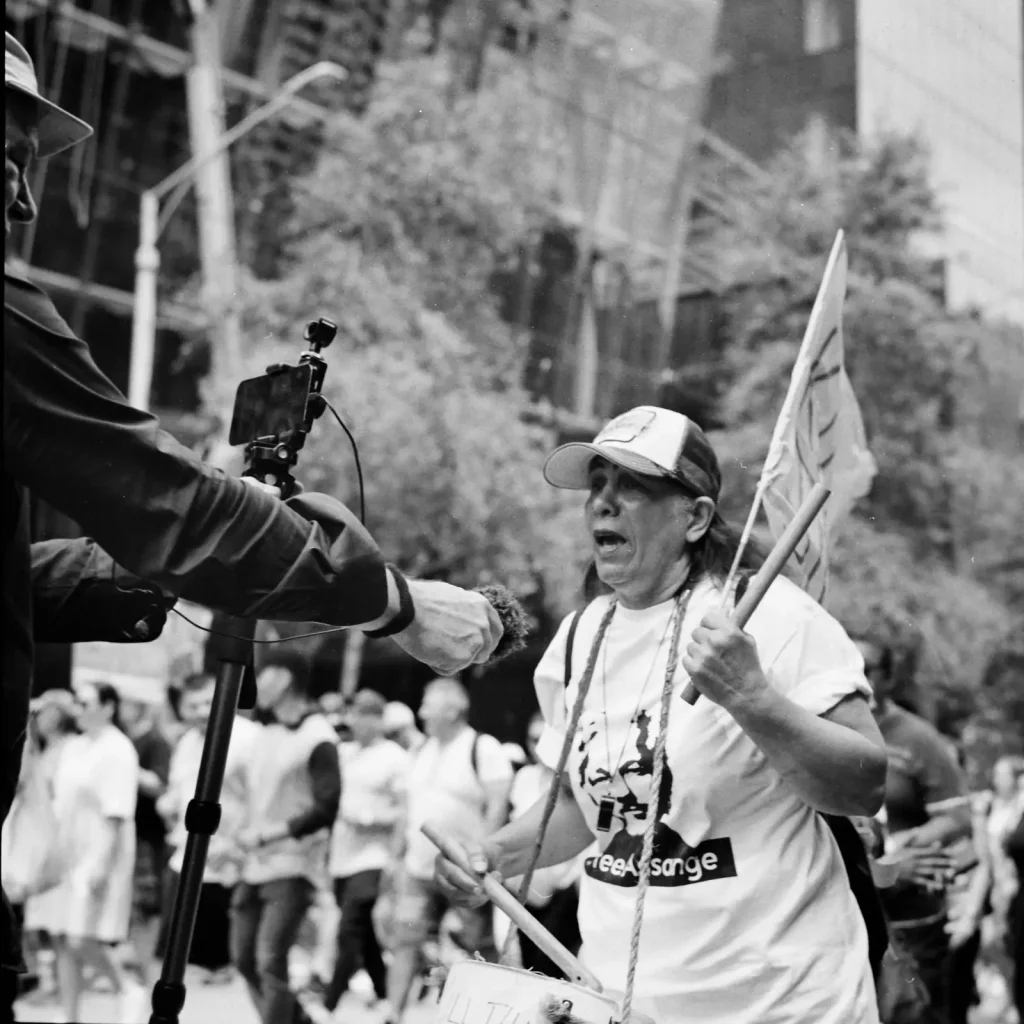
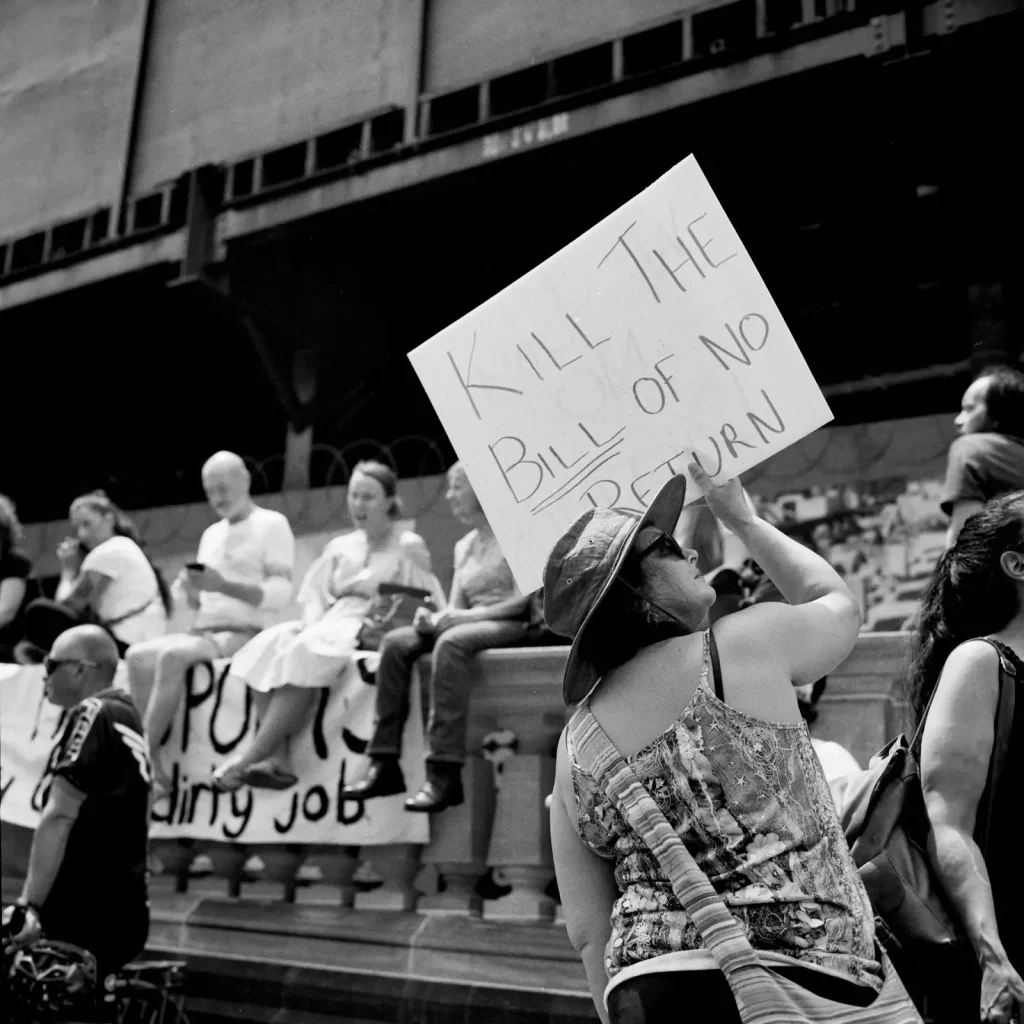
Three rolls of 120 down, I turned to my trusty M2 for some static crowd shots. As I was photographing, I couldn’t help but think about all the action the two cameras have seen over the years. Rolleiflexes served as press cameras for many years as did Leica Ms. If you look at footage from any important world event during the 50s, 60s, and 70s, you are likely to see at least one or two photographers with Rolleis in hand frantically advancing the transport crank between captures.
But perhaps most importantly, I had a blast shooting such a dynamic event on film. I used zone-focusing for shots that required me or the subject to move around and didn’t bother metering since doing so would have eaten into precious time. The freedom afforded by less tinkering and more shooting proved to be crucial because it kept me in the creative zone and contributed to the “feel” of some of the shots and therefore the overall story. On a side note, the analog gear held its own, working flawlessly through several film changes, and even getting compliments from members of the crowd (“hey, that is an awesome camera–a Rolleiflex?”). I developed all of the rolls in Rodinal and scanned using a DSLR camera and macro lens at home.
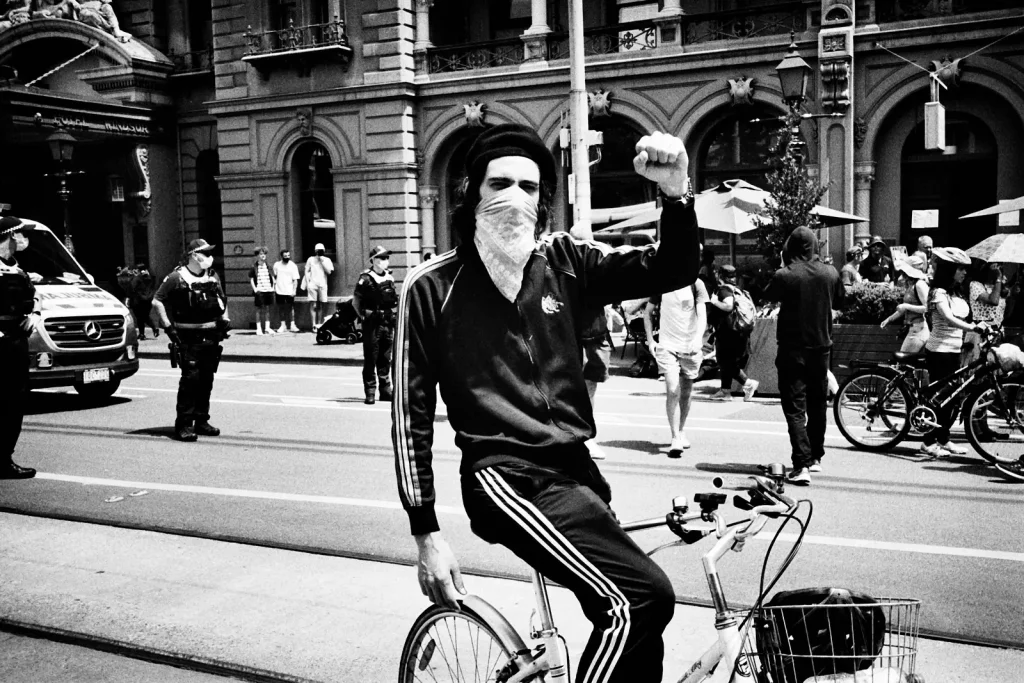
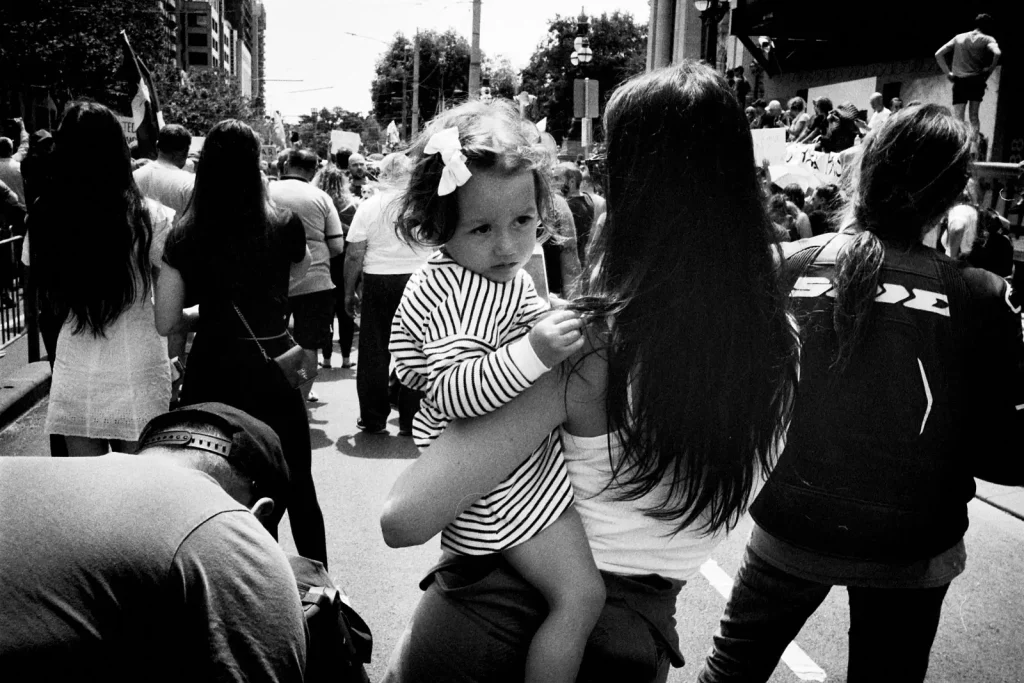
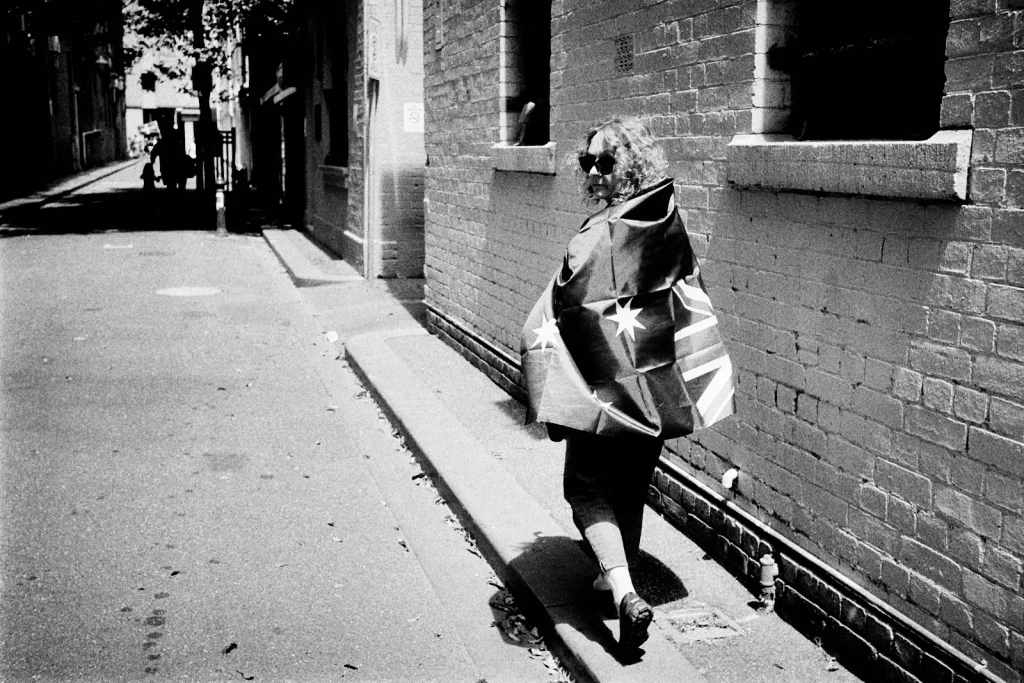
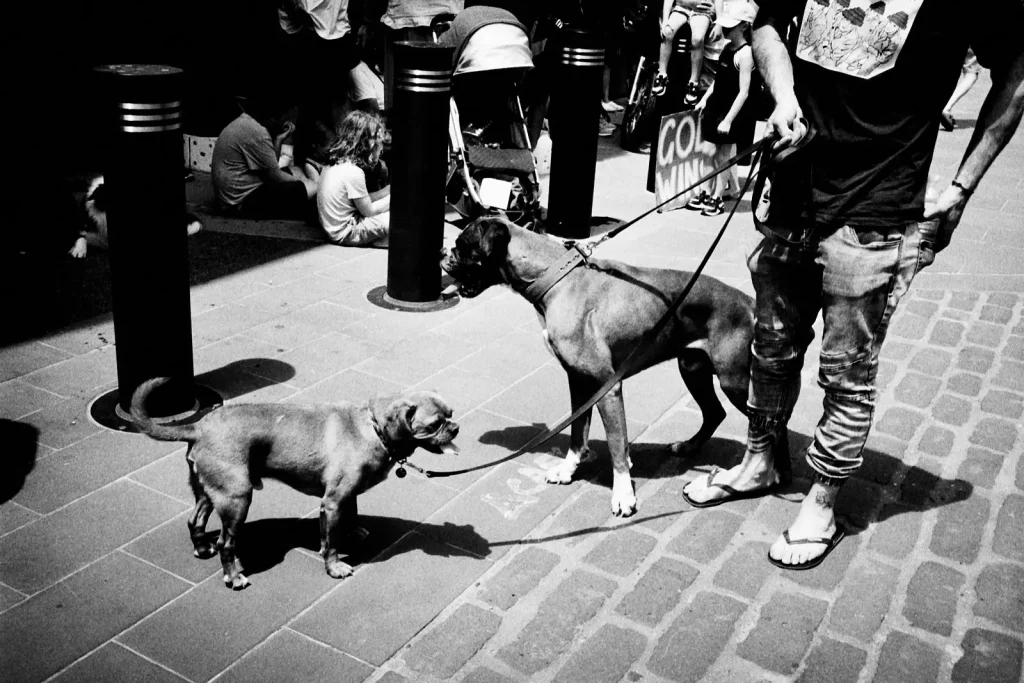
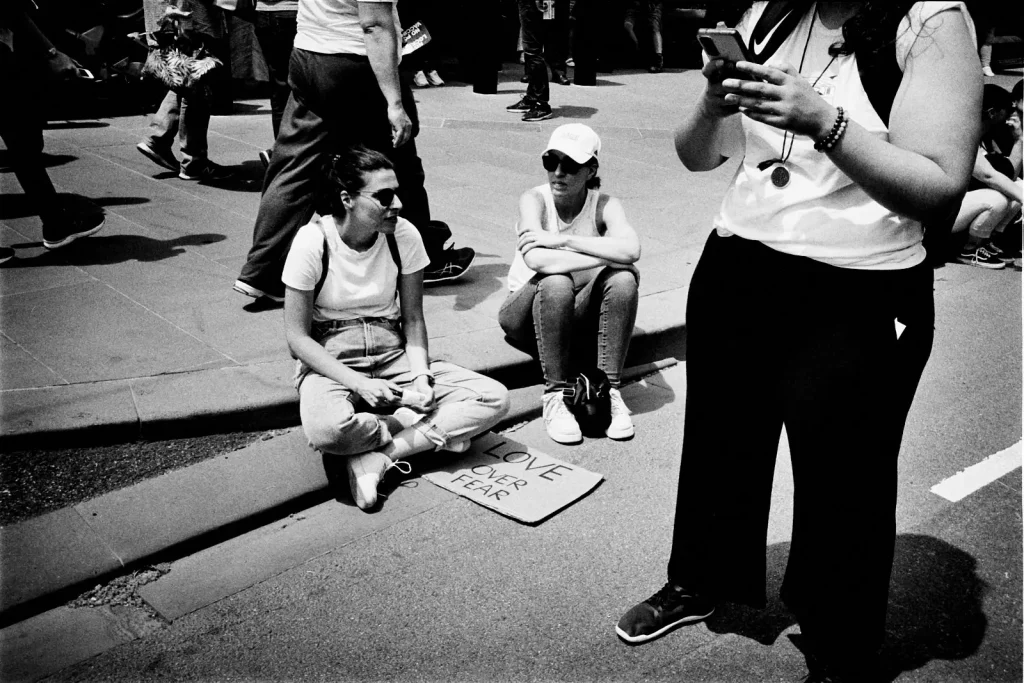
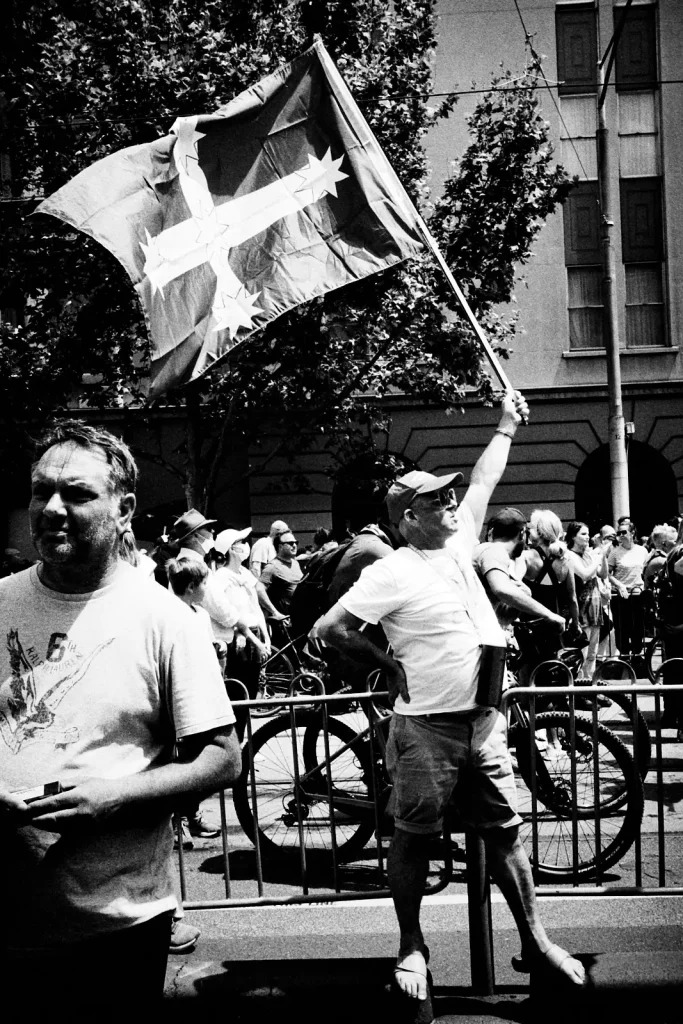
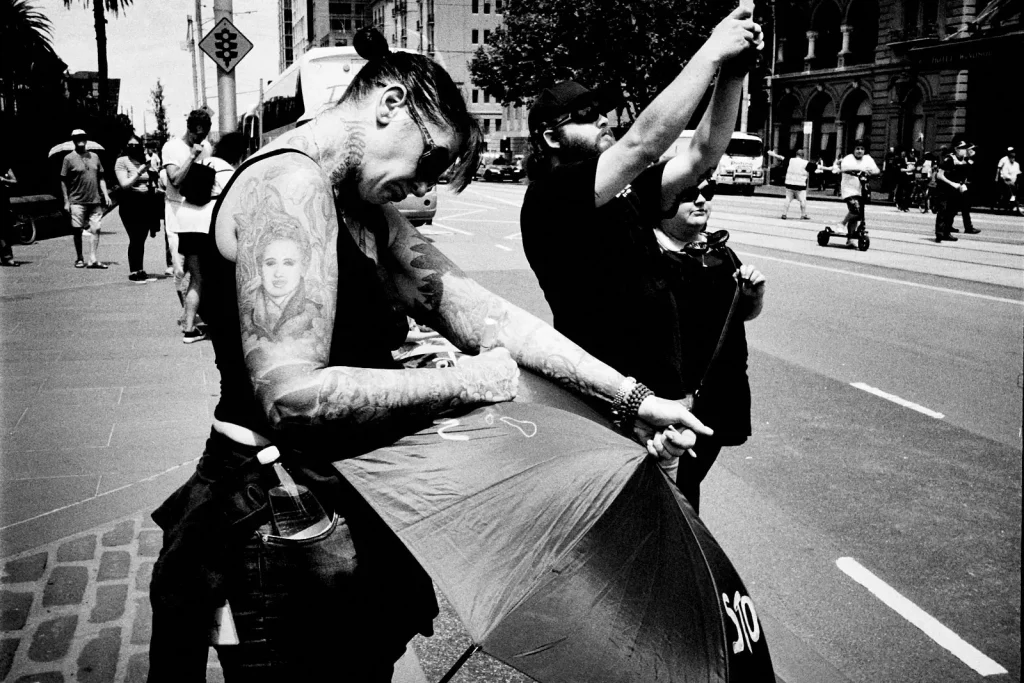
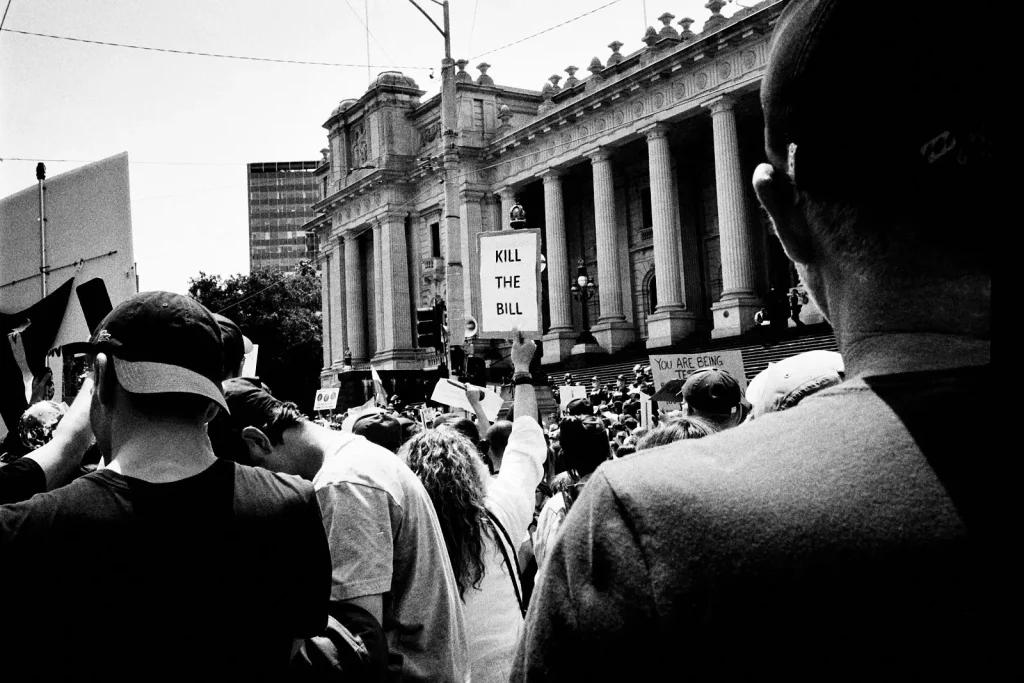
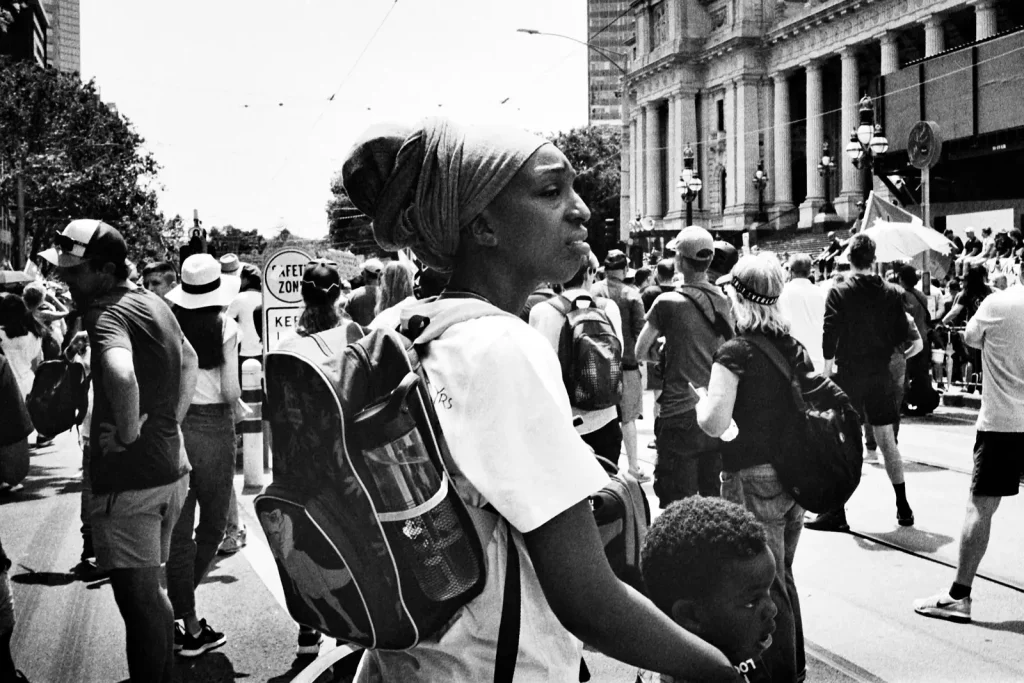
Now is probably a good time to clarify something. Protests aren’t always exciting or even interesting. In fact most protests in democratic countries are pretty boring affairs where a few people show up with signs, shout a few slogans, stop by a nearby cafe to have a late lunch, and drive home in their recent-model electric cars. I’ve been in some that were full of action and excitement, mostly in the US. What I’ve learned so far is that Australians are mostly a peaceful and obedient bunch. There were no insults, fights, or violence of any kind to be found anywhere on this day and both the police and protestors were on their best behavior. Regardless, the adrenaline and overall feeling of being in a large crowd with strong opinions made it about as “protest-y” as one could expect.
I’m not sure that there is a great lesson to be learned here, other than for me, I feel an overwhelming sense of, “Ah, this is what it was like” when it comes to the experience of relying on analog gear in street protests or events. I didn’t feel particularly hampered by changing film, lack of autofocus, or the other mechanical operations involved. I found the mandatory breaks actually helped me notice where the action was and where I felt I needed to be next. What I did find lacking was my own preparation: I didn’t have enough rolls of film with me and lack of proper film storage meant I had to spend a few extra seconds trying to find or dispose of rolls in my bag. I have since purchased a proper film storage case, which should come in handy at the next event.
You can see more of my work here.
Share this post:
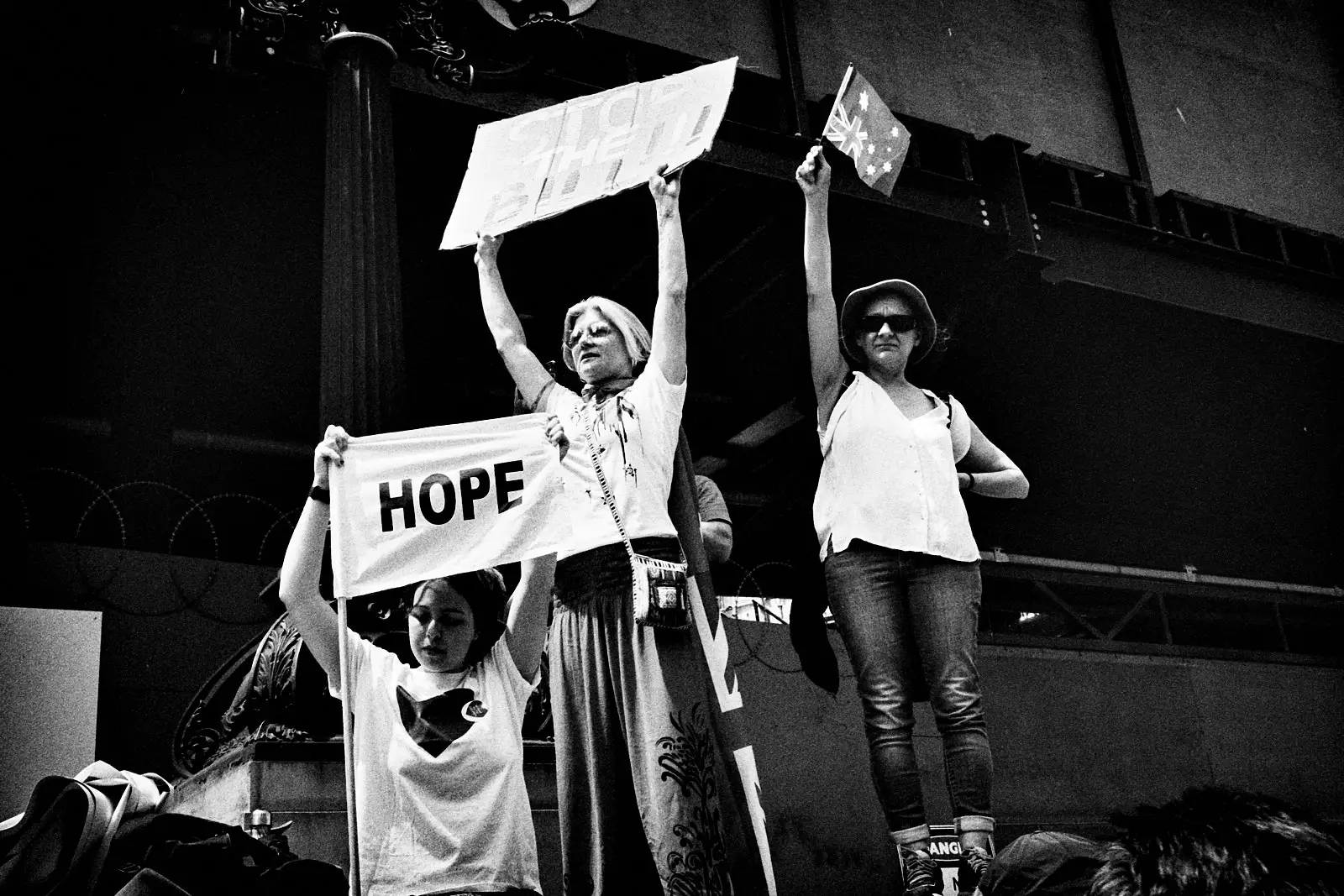








Comments
Joe on Street Protests on Film: Leica M2 and Rolleiflex 2.8F – By Exphotog
Comment posted: 04/12/2021
Dan Castelli on Street Protests on Film: Leica M2 and Rolleiflex 2.8F – By Exphotog
Comment posted: 08/12/2021
A nice series. Glad to hear nothing became violent. I shot a handful of pro-Trump supporters (Leica M2; 35mm Summarit-m) standing on the street in my small Connecticut town. I’ve lived in this town my entire life (70 years) and seem to know everyone. These scumbags verbally attacked me (with face covering so they couldn’t be recognized) as the fake press and a member of the deep blue state. They numbered around 12 people, men, women & children. One told me that “when Trump is returned to power, we’ll take care of people like you!” I just smiled, wished them a good day and thought about what a sh*t show America has become. It’s sad and depressing.
Comment posted: 08/12/2021